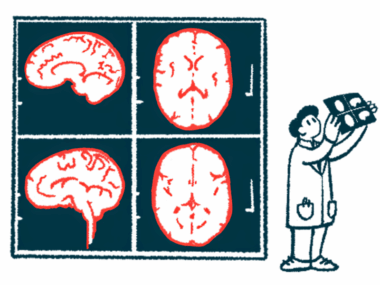Risk of MS Activity After DMT Stop Greater With RRMS, Younger Age
Study into relapses, MRI lesions in RRMS and SPMS patients no longer on therapy
Written by |

Note: This story was updated Oct. 31, 2022, to correct that in the six months after treatment discontinuation, relapses were reported in 18.8% of RMMS patients and 3.5% of those with SPMS.
When multiple sclerosis (MS) patients stop their disease-modifying treatment, the risk of relapses and disease activity on MRI scans is higher among patients who are younger, have a shorter duration of disease, and have relapsing-remitting MS (RRMS), a study from Argentina reports.
Male sex and a relapse in the past six months also linked with a greater risk of MRI activity.
These findings may be “useful in determining which patients are candidates for the discontinuation of treatment in MS,” the researchers wrote.
The study, “Disease activity after discontinuation of disease-modifying therapies in patients with multiple sclerosis in Argentina: data from the nationwide registry RelevarEM,” was published in the journal Neurological Research.
Disease-modifying treatments (DMTs) are known to alter MS progression, reducing the risk of relapses, preventing the development of new or enlarging lesions on MRI scans, and slowing the rate of disability accumulation.
Over a dozen DMTs are approved to treat relapsing forms of MS in the U.S.
There are numerous reasons why some people with MS may decide to stop treatment — side effects, lack of efficacy, issues with health insurance coverage, changes in life circumstances such as pregnancy, etc. However, there is little published data on how MS tends to progress after a patient discontinues a DMT.
Researchers analyzed data from a multiple sclerosis registry in Argentina called RelevarEM (NCT03375177), and they assessed outcomes for patients who discontinued DMTs.
MS relapse after stopping most common with RRMS, patients younger than 45
Data identified covered 377 relapsing MS patients who had been on a DMT for at least two years, then stopped the DMT for at least six months and were followed over that period. Information collected spanned from August 2018 to May 2021.
Among these 377 people, 292 had RRMS, while the other 85 had active secondary progressive MS (SPMS). About two-thirds of the patients were female, and the median follow-up time after DMT discontinuation was slightly more than one year (14.6 months).
The most common reason given for stopping a DMT was patient decision or preference (21.5%), followed by issues with insurance (17.4%), side effects (13.2%), pregnancy or pregnancy planning (12.4%), and lack of treatment efficacy (11.6%).
In the six months after treatment discontinuation, relapses were reported in 18.8% of RRMS patients and 3.5% of those with SPMS. New disease activity on MRI scans — defined as new or enlarging lesions — was noted in 55% of relapsing-remitting and 3.5% of secondary progressive MS patients.
In statistical analyses, the risk of new MS activity on MRI scans tended to be higher in patients who were younger and male, had a short disease duration, and recent history of relapse activity.
Rates of new MRI activity were also higher in people with RRMS than SPMS, which is broadly in line with the known biology of these two MS types. In RRMS, symptoms are mainly driven by new inflammatory activity, whereas SPMS is characterized by gradually progressing nerve cell dysfunction, with relapses less common.
“We detected greater activity of the disease after suspension [of treatment] in the following cases: male patients, patients younger than 45 years, relapsing-remitting phenotype, and short duration of the disease,” the researchers wrote.
During follow-up, 15.4% of patients experienced a relapse. These relapses were also associated with younger age, a shorter disease duration, and RRMS.
The researchers stressed several limitations to this study’s findings, most notably, a lack of access to data on prior treatments or disease activity against which to make comparisons. The team also noted that many patients did not have MRI data available after DMT discontinuation.





